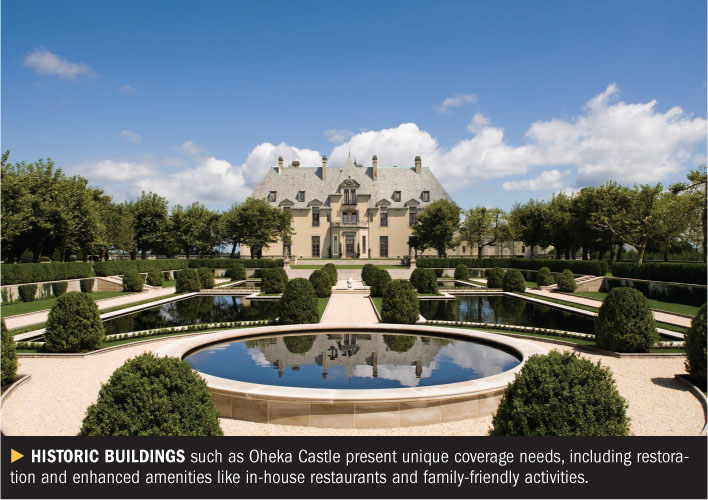For historic homes, the chief insurance consideration is typically calculating replacement costs so that the building's cultural and educational qualities—the factors that make it unique—can be restored after a damaging event. “If something happens that places the historic designation at risk, the property has to be able to [remedy] that or it will no longer have any value as a [destination for visitors],” says Richard Standring, Northeast regional manager for risk services at Fireman's Fund Insurance Co.
 The cultural worth of an older building often resides in the labor and craftsmanship embodied in its architectural details. But as mid-20th-century buildings increasingly join the ranks of the National Register of Historic Places, calculating the replacement value has become more challenging. Unlike older historic buildings made of commonplace materials such as wood and brick, properties built in the 1950s and 1960s often incorporated one-of-a-kind glass, metal and plastic composites that were fabricated in limited production runs.
The cultural worth of an older building often resides in the labor and craftsmanship embodied in its architectural details. But as mid-20th-century buildings increasingly join the ranks of the National Register of Historic Places, calculating the replacement value has become more challenging. Unlike older historic buildings made of commonplace materials such as wood and brick, properties built in the 1950s and 1960s often incorporated one-of-a-kind glass, metal and plastic composites that were fabricated in limited production runs.
Insurers are becoming more creative at addressing such considerations. If there's a total loss, for instance, rebuilding might not be an option; some carriers will instead pay to construct a visitors' center or similar educational facility.
Recommended For You
Want to continue reading?
Become a Free PropertyCasualty360 Digital Reader
Your access to unlimited PropertyCasualty360 content isn’t changing.
Once you are an ALM digital member, you’ll receive:
- Breaking insurance news and analysis, on-site and via our newsletters and custom alerts
- Weekly Insurance Speak podcast featuring exclusive interviews with industry leaders
- Educational webcasts, white papers, and ebooks from industry thought leaders
- Critical converage of the employee benefits and financial advisory markets on our other ALM sites, BenefitsPRO and ThinkAdvisor
Already have an account? Sign In Now
© 2025 ALM Global, LLC, All Rights Reserved. Request academic re-use from www.copyright.com. All other uses, submit a request to [email protected]. For more information visit Asset & Logo Licensing.








